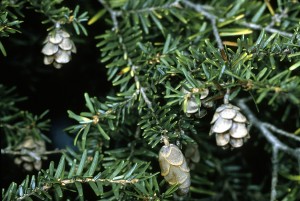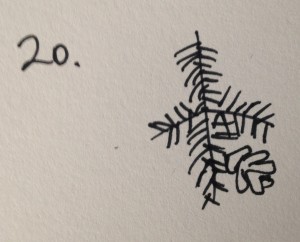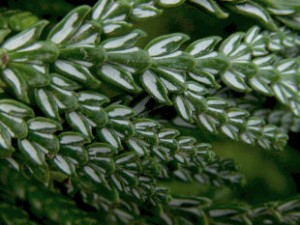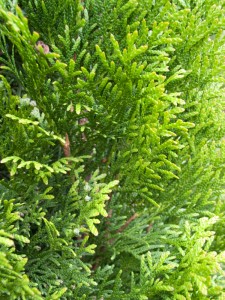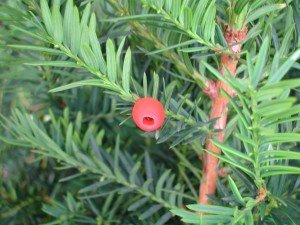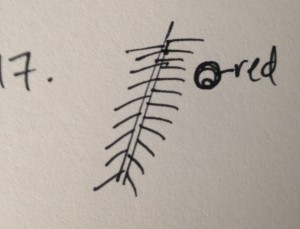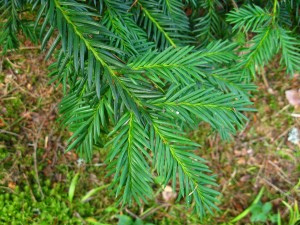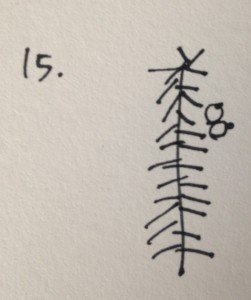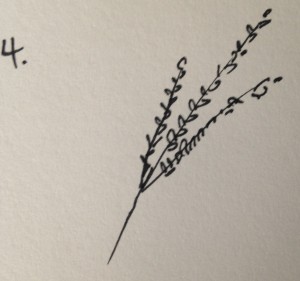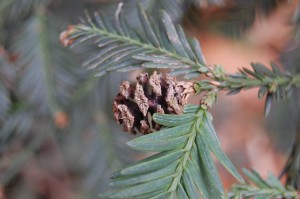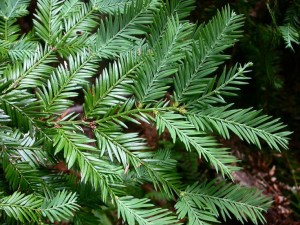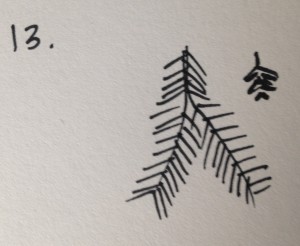Welcome to UBC Blogs. This is your first post. Edit or delete it, then start blogging!
Author Archives: olivia walker
List 11 and 12 references
- Brockman, C. (2002). Trees of North America: A Guide to Field Identification. New York, NY: St. Martins Press.
This book was helpful in identifying a number of the plants on the last two lists. The descriptions were complete included all the necessary information. Illustrations were clear and helped identify key features of each tree. A good resource that I would recommend.
2. http://www.sfbotanicalgarden.org/
This website from the San Fransisco botanical garden offered a lot of information about the plants that were available. Not all plants on the list were available here however I would recommend this list as it was inclusive with good images.
3. http://www.chicagobotanic.org/plantcollections#plantfinder
This website was particularly well organized and easy to maneuver. It again had a number of the plants listed and was easy to access the various areas of the website. I would recommend this for further use.
Tsuga canadensis
(image from wikimedia.commons.org)
Tsuga canadensis
Evergreen, coniferous, Pinaceae
Common name: Canadian hemlock
Hardiness: 3-7
Mature ht and spread: 40-70 ft tall, 25-35 feet wide
Form: dense, pyramidal
Conditions: Easily grown in average, medium moisture, well-drained soils in part shade to full shade
Leaf: flat sprays, lacy foliage, smallest needles and cones in genus, short dark green needles with two white bands beneath, arranged in two rows along stem
Fall: none
Flower: none
Cone: tan brown, small, pendant, short stalked
Limits: some disease
Suitable uses: shady areas of garden, hedge
Id: smallest cones and needles
Native to: Canada
Thujopsis dolobrata
(image from wikimedia.commons.org)
Thujopsis dolobrata
Evergreen, coniferous, Cupressaceae
Cultivar: ‘nana’ low growing
Common name: asunaro, the lizard tree
Hardiness: 6
Mature ht and spread: 8-15 m tall, 6-10 m wide
Form: conical, multiple upright stems and horizontal lateral branches
Conditions: full sun-part shade, moist, fertile, acidic soil, tolerates drought, compact soil
Leaf: overlapping, thick, shiny, scaly leaves, white waxy stomatal patches underneath (on back), flat, fan like drooping branchlets
Fall: none
Flower: none
Cone: imbricate, wax covered scales, distinct, decussate scales
Limits: none
Suitable uses:
Id: don’t mistake for thuja!
Native to: Japan
Thuja occidentalis ‘Smaragd’
(image from wikimedia.commons.org)
Thuja occidentalis ‘Smaragd’
Evergreen, coniferous, Cupressaceae
Common name: emerald cedar
Hardiness: 3
Mature ht and spread: 8-12 m tall, 5-8 m wide
Form: narrow, pyramidal, dense, ascending branches, conical
Conditions: full sun-part shade, moist, fertile, acidic soil, needs water to get established
Leaf: overlapping, dull green scaly leaves, flattened, fan like branchlets, in sprays, emerald green, bronze in winter
Fall: none
Flower: none
Cone: ovate, small, smooth imbricate scales
Limits: intolerant of poor drainage, drought, drying winds
Suitable uses: specimen, accent, screen, hedge (most popular used)
Native to: eastern North America
Taxus × media
(image from wikimedia.commons.org)
Taxus x media
Evergreen, coniferous, Taxaceae
Common name: yew
Hardiness: 4-7
Mature ht and spread: 2-20 m tall, 2-12 m wide
Form: shrubby, wide spreading
Conditions: full sun-part shade, medium water
Leaf: Two ranked, pointed, oblong to needle-like, olive to dark green leaves are attractive year round
Fall: none
Flower: none
Cone: reduced to single seed surrounded by red, cup-like aril
Limits: can’t tolerate wet conditions
Suitable uses: hedges, borders, massing, versatile
Native to: Japan, England
Taxus baccata ‘Repandens’
(image from wikimedia.commons.org)
Taxus baccata ‘Repandens’
Evergreen, coniferous, shrub, small tree, Taxaceae
Common name: English yew
Hardiness: 6
Mature ht and spread: 8-12 m tall, 6-10 m wide
Form: wide spreading, dense branches, ground covering yew
Conditions: full sun-part shade, deep, moist well drained soil, tolerant of periodic drought
Leaf: undulating branches, spirally arranged, pointed, dark green flattened needles, lighter green under, two ranks along branchlet
Fall: none
Flower: none
Cone: reduced to single seed surrounded by red, cup-like aril
Limits: all parts of yew are poisonous
Suitable uses: parks, gardens, groundcover
Id: almost impossible to id without seeing whole plant
Native to: Europe, northern parts of Africa
Taxus baccata ‘Fastigiata’
(image from wikimedia.commons.org)
Taxus baccata ’Fastigiata’
Evergreen, coniferous, shrub, small tree, Taxaceae
Cultivar: HM Eddy bc of no arils or seeds
Common name: Irish Yew
Hardiness: 6
Mature ht and spread: 8-12 m tall, 6-10 m wide
Form: vase shaped, spreading, tall, thin, low branching
Conditions: full sun-part shade, deep, moist well drained soil, tolerant of periodic drought
Leaf: spirally arranged, pointed, dark green flattened needles, lighter green under, two ranks along branchlet
Fall: none
Flower: none
Cone: reduced to single seed surrounded by red, cup-like aril
Limits: all parts of yews are poisonous
Suitable uses: specimen, accent, screen, hedge
Id: look at cone
Native to: Europe, western Asia, North African mountains
Sequoiadendron giganteum
(image from wikimedia.commons.org)
Sequoiadendron giganteum
Evergreen, coniferous, Cupressaceae
Common name: giant sequoia, sierra redwood
Hardiness: 6
Mature ht and spread: 8-18 m tall, 8-10 m wide
Form: broad, conical, horizontal, lateral branches
Conditions: full sun, moist, well drained, deep soil, open space, drought and heat tolerant, fire resistant/adapted
Leaf: aromatic, spirally arranged, overlapping, awl shaped, green-blue green leaves
Fall: none
Flower: none
Cone: needs heat to release seeds, ovoid, produced in clusters at branchlet tip
Limits: intolerant of cold winds, aerosol pollutants
Suitable uses: specimen, accent, grove
Native to: central California
Sequoia sempervirens
(images from wikimedia.commons.org)
Sequoia sempervirens
Evergreen, coniferous, Cupressaceae
Common name: California redwood
Hardiness: 7
Mature ht and spread: 10-20 m tall, 8-10 m wide
Form: strong upright growth with broad lateral branches
Conditions: full sun, part shade, deep, moist well drained soil, tolerates periodic drought, grows in fog belt, likes moist and cool, tallest known tree on the planet
Leaf: spirally arranged, pointed, dark green flattened needles, glaucous underneath, two ranks along branchlets
Fall: none
Flower: none
Cone: seed cones reddish brown, oblong
Limits: not tolerant of drying or cold wind, needs moisture
Suitable uses: specimen, accent, groves
Native to: northwestern California, southwestern Oregon
